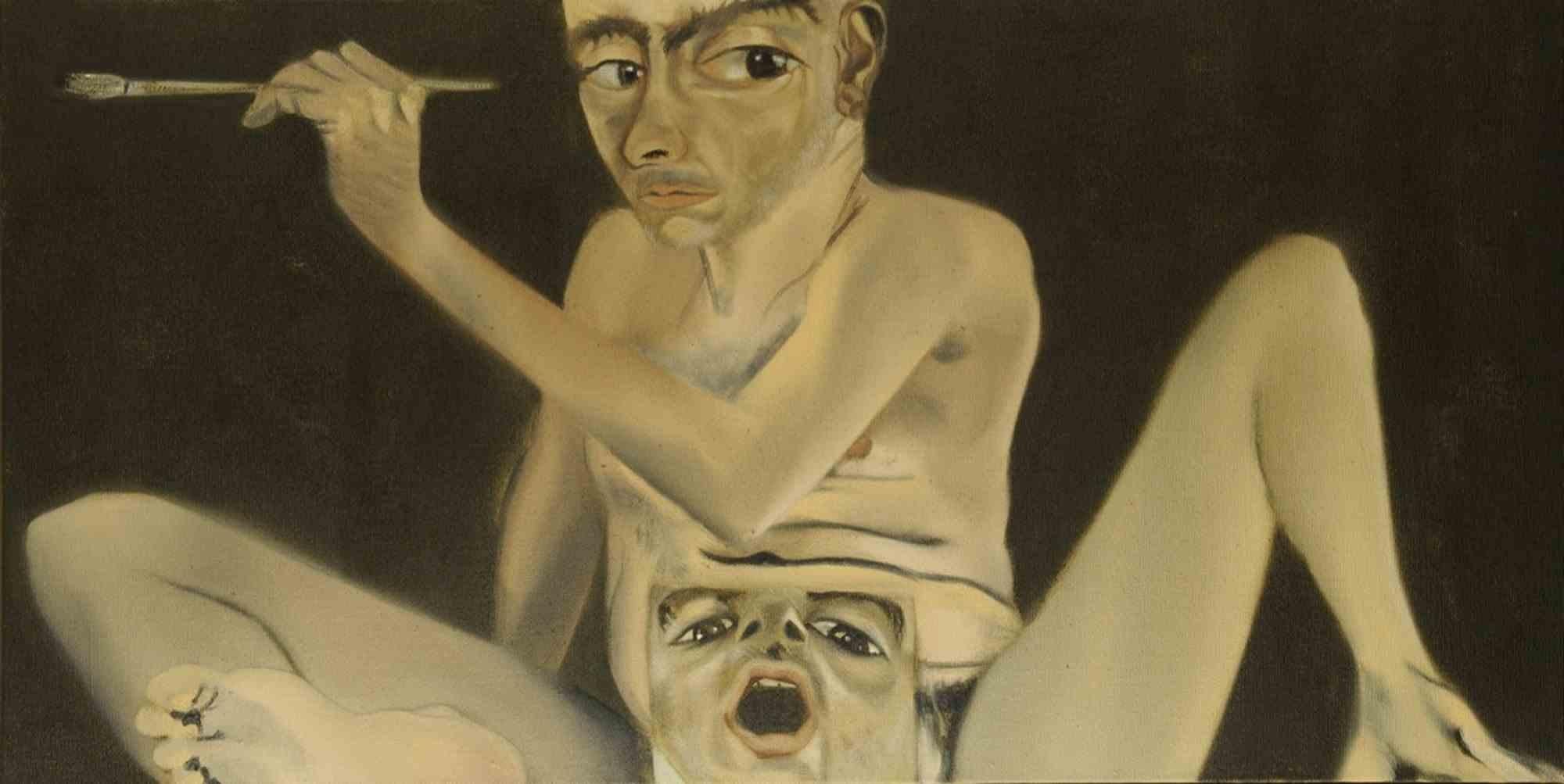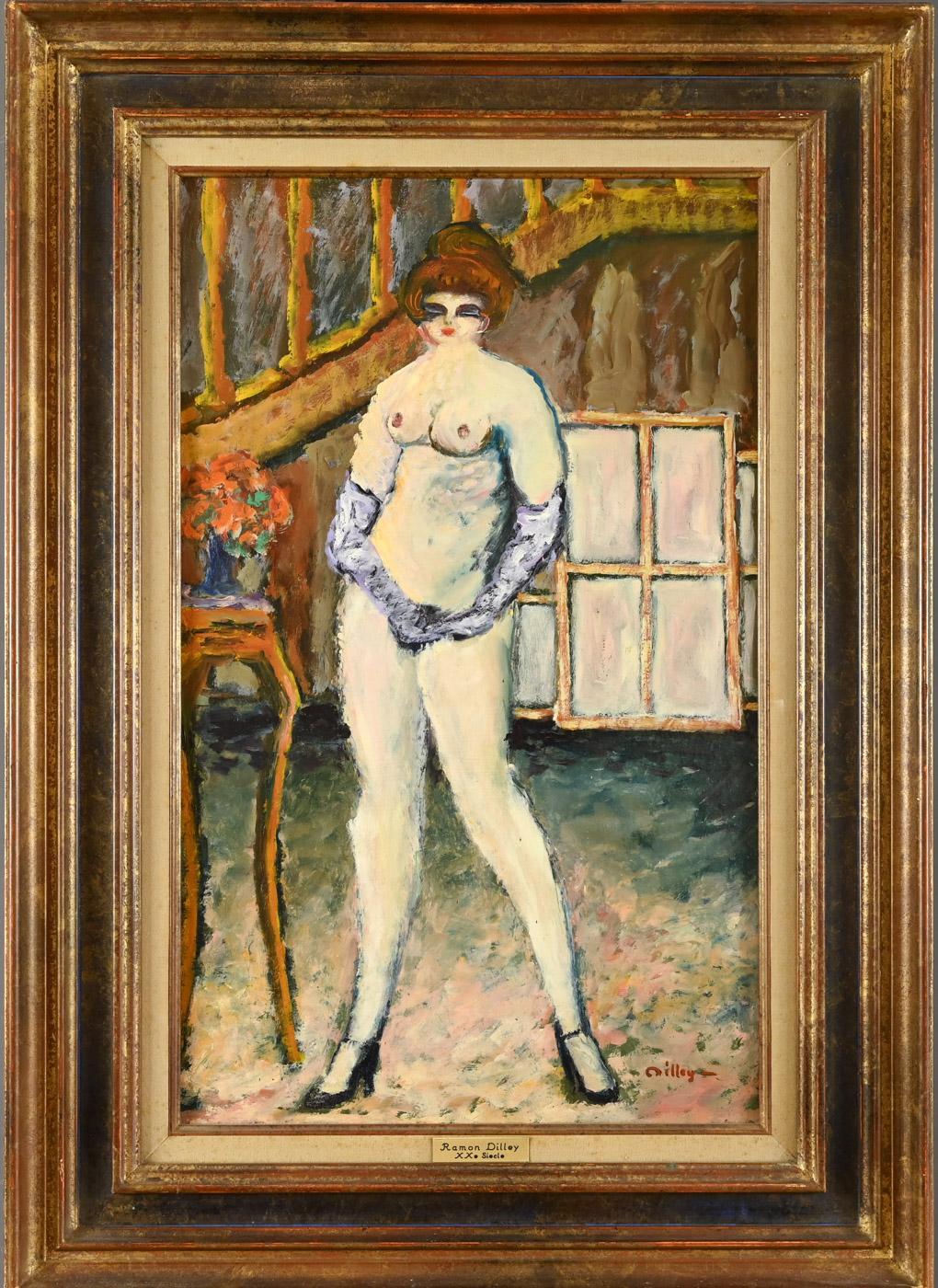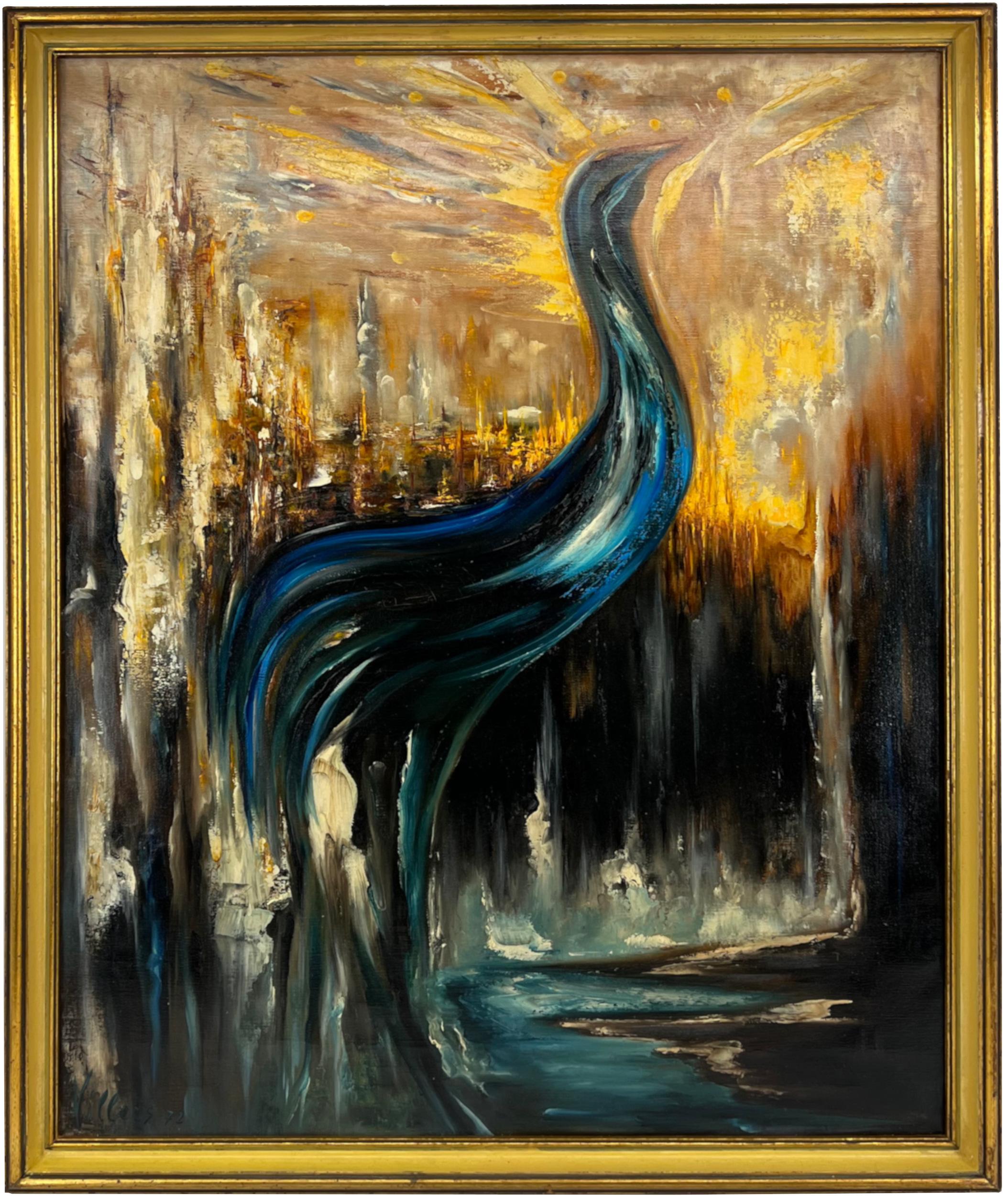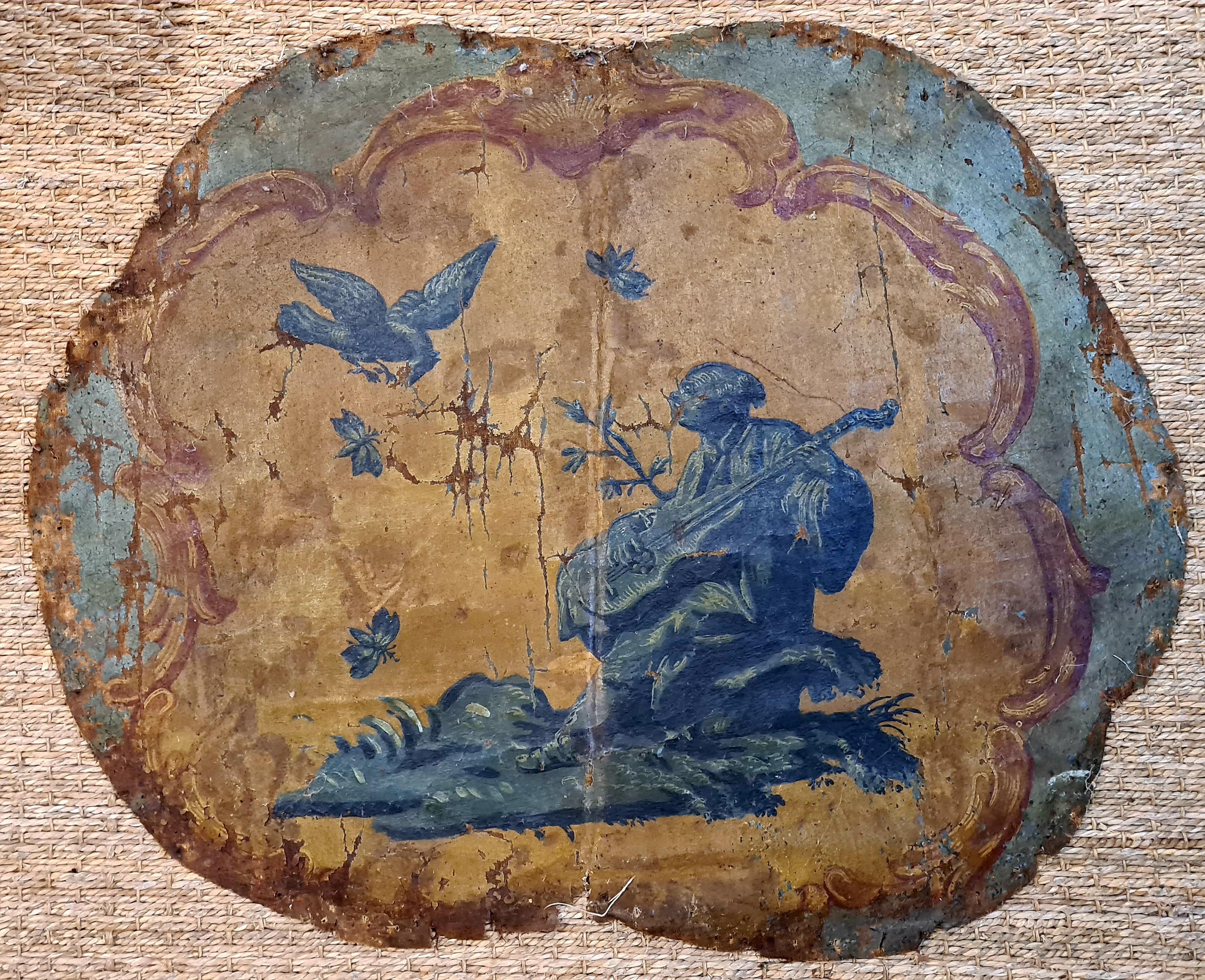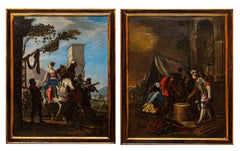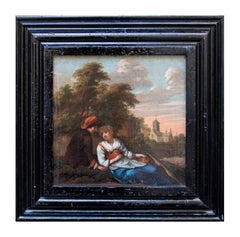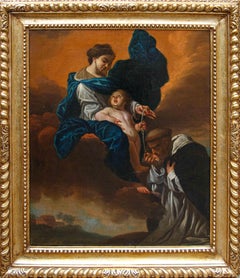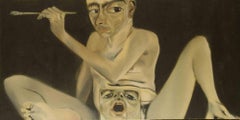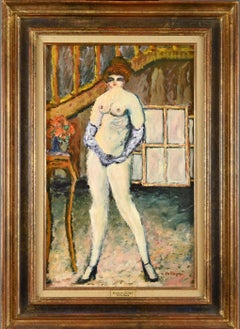Items Similar to Pietro Dandini (Florence, April 12, 1646 - November 26, 1712), The Finding
Want more images or videos?
Request additional images or videos from the seller
1 of 18
Pier (Pietro) DandiniPietro Dandini (Florence, April 12, 1646 - November 26, 1712), The Finding
About the Item
Pietro Dandini (Florence, April 12, 1646 - November 26, 1712), attr.
The Finding of Moses
Oil on canvas, 105 x 206 cm
Framed, 116 x 219 cm
Born, as the erudite Baldinucci reports, in 1646 in Florence into a family of artists, Pietro (or Pier) Dandini received his first rudiments in painting from his uncle Vincenzo. News about his existential parabola is known to us through Francesco Saverio Baldinucci's very detailed biography of him, written within a few years of his death: the fact that, within a very limited period of time after his death, an independent biography was dedicated to him demonstrates the great critical fortune that the painter, already from the very early eighteenth century, enjoyed in Tuscan circles. Following his Florentine training, Dandini made a study sojourn in Venice, tangentially touching on the centers of Modena, Parma and Bologna as well: at this juncture, the Tuscan had the opportunity to observe live and carefully study the works of Titian, Veronese, Correggio and the Carraccis, which left an indelible mark on his branched visual imagination, markedly influencing his entire future production. In his early works, including Un Miracolo del beato Giovacchino Piccolomini-which the erudite Cinelli in 1677 praised highly- and the Assumption of the Virgin in St. Verdiana, one denotes a definite influence with respect to the production of Pietro da Cortona, perceived as an ideal master. Beginning in the 1790s, Dandini received important public commissions in Tuscany, often being hired by the grand duke himself: in 1591, for example, the artist frescoed an Allegory of Tuscany for the vault of the portrait hall of the Uffizi, a work warmly acclaimed by the now elderly arist Livio Mehus; other members of the grand ducal family availed themselves of Dandini on multiple occasions as decorator of their residences: grand Duchess Vittoria, at the Pitti Palace and at Poggio Imperiale, and Cardinal Francesco Maria at the villa of Lappeggi: here Dandini, in 1703, painted in fresco a ceiling with the Chariot of the Sun and six battle scenes of extreme quality that until the 1970s were considered to be by Borgognone (Rudolph,1972; Gregori, 1978). Given the rarity of this painter's paintings in public Italian and foreign collections, considerations inherent in his work can be drawn mainly from works in churches in Florence or other Tuscan localities. Prominent among the works certainly attributed to him is the altarpiece in S. Giovannino dei Cavalieri in Florence, with the Beheading of the Baptist, one of the masterpieces of second-century Florentine art. Although we learn from writings coeval with or slightly later than his existential parable that he also sent works to Germany and Poland (F. S. Baldinucci, p. 280; Moucke, 1762), he was undoubtedly operative especially locally, where he distinguished himself decisively and did not lack for commissions, not only because of his great talent but also because of the affable character that distinguished him and the literary and musical culture that procured him many distinguished friends.
The themes related to the infancy of Moses enjoyed great iconographic fortune in the 17th century, primarily because they discerned in them the foreshadowing of the Christological themes illustrated between the pages of the four canonical gospels and the apocryphal texts. For example, in the adventurous story of the finding of baby Moses by Pharaoh's daughter, we read the foreshadowing of the Escape to Egypt of the Holy Family, in which Jesus escapes from the persecution of the pagan king Herod. The finding of Moses was also often interpreted as symbolizing man's triumph over the adversities that threaten him and grip his troubled existence. On several occasions throughout his entire career, Dandini presents episodes from the life of Moses in his canvases: we need only think, in addition to the beautiful canvas in question, of Moses as a child tramples on Pharaoh's crown, currently at the Crociani picture gallery in Montepulciano. In this case, the Florentine artist depicts the scene of the child prophet being found: in a landscape reminiscent of the verdant territories of the Latium countryside furrowed by the Tiber River, a large group of female figures move about. In the foreground, a servant girl hurries to rescue from the waters of the river the baby's small body, abandoned in a wicker basket visible at her feet. The woman is about to hand the newborn child to the queen of Egypt, richly attired and with a crown - a typical attribute of Dandinian patrician women - on her head, who opens, in a gesture of extreme gentleness, her arms to receive him, amid the astonished eyes of the gynoecium crowding around her. Many of the crucial characteristics of Dandini's activity are discernible in the painting: the rapid, textural brushstrokes, the decisive, rosy tone of the complexions, the sinuous, strongly connoted features of the physiognomies of the faces, and the dense crowding of well-socialized figures within the compositions.
- Creator:Pier (Pietro) Dandini (1646 - 1712, Italian)
- Dimensions:Height: 41.34 in (105 cm)Width: 81.11 in (206 cm)
- More Editions & Sizes:106x205Price: $9,230
- Medium:
- Period:
- Condition:
- Gallery Location:Milan, IT
- Reference Number:1stDibs: LU2639216356742
About the Seller
No Reviews Yet
Vetted Professional Seller
Every seller passes strict standards for authenticity and reliability
1stDibs seller since 2023
- ShippingRetrieving quote...Shipping from: Milan, Italy
- Return Policy
Authenticity Guarantee
In the unlikely event there’s an issue with an item’s authenticity, contact us within 1 year for a full refund. DetailsMoney-Back Guarantee
If your item is not as described, is damaged in transit, or does not arrive, contact us within 7 days for a full refund. Details24-Hour Cancellation
You have a 24-hour grace period in which to reconsider your purchase, with no questions asked.Vetted Professional Sellers
Our world-class sellers must adhere to strict standards for service and quality, maintaining the integrity of our listings.Price-Match Guarantee
If you find that a seller listed the same item for a lower price elsewhere, we’ll match it.Trusted Global Delivery
Our best-in-class carrier network provides specialized shipping options worldwide, including custom delivery.More From This Seller
View AllPair of genre scenes attributed to Johann Heinrich Schönfeld
By Johann Heinrich Schönfeld
Located in Milan, IT
Johann Heinrich Schönfeld (Biberach an der Riß, March 23, 1609 - Augsburg, 1684) (attr.)
Gentlewoman on horseback at a tavern and Dice players
(2) Oil on canvas, 98 x 74.5 cm
Joha...
Category
17th Century Figurative Paintings
Materials
Canvas, Oil
From Paolo Veronese, Allegory of Strength and Wisdom
By Paolo Veronese
Located in Milan, IT
Follower of Paolo Veronese (Verona, 1528 - Venice, 1588)
Allegory of wisdom and strength
Oil on canvas, 48 x 36.5 cm
Picture frame, 61 x 48 cm
The Allegory of Wisdom and Strength...
Category
16th Century Other Art Style Figurative Paintings
Materials
Canvas, Oil
By Bernardus van Schendel, The Lovers
Located in Milan, IT
Bernardus van Schendel (1647-1707)
Engaved
Oil on canvas, 29 x 29 cm
The item is in good condition
Category
17th Century Other Art Style Figurative Paintings
Materials
Canvas, Oil
Circle of Domenico Piola, Madonna and Child with St. Dominic
By Domenico Piola the Elder
Located in Milan, IT
Circle of Domenico Piola (Genoa, 1627 - Genoa, April 8, 1703)
Madonna and Child with St. Dominic
Oil on canvas, 76.5 x 63.5 cm
With frame 95 x 83 cm
This beautiful 17th-century ...
Category
17th Century Other Art Style Figurative Paintings
Materials
Canvas, Oil
By Angelo Monticelli, Dancing Putti
Located in Milan, IT
Angelo Monticelli (Milan, 1778-1837), attr.
Dancing putti
Oil on canvas, 122.5 x 131 cm
The canvas presented here, referable to the 19th century, constituted an exquisite example of a painting made to decorate a boiserie, as evidenced by the particularity of the format and the ornamental subject matter.
The theme of dancing putti takes up a widely used and experimented model around the 1620s, on which the greatest artists tried their hand: pordenone, author of the Dance of Putti now in the Uffizi Gallery in Florence, for example, was able to make use of multiple visual models to fine-tune this complex and original composition, such as having known Marcantonio Raimondi's famous engraving with a gyre of cupids, derived from an invention of Raphael himself and dated between 1517 and 1520. Over the following centuries, the fame of this prissy subject was never diminished.
In fact, the work under consideration can be attributed to the hand of 18th-century artist Angelo Monticelli, who specialized in tempera drawing and was a pupil of painter Andrea Appiani (1754-1817), active mainly in Lombardy, where, for the Teatro alla Scala he designed the figures of the box parapets (1807) and the curtain (1821). In 1826, during the repainting of Ferrara's Municipal Theater, Monticelli decorated the plafond with an Apotheosis of Lodovico Ariosto. The curtain of the Rossini Theater in Pesaro is also by his hand. For the Duke of Lodi Francesco Melzi...
Category
19th Century Other Art Style Figurative Paintings
Materials
Canvas, Oil
The Expulsion of Hagar painted by Ciro Ferri
Located in Milan, IT
Cyrus Ferri (Rome, 1634 - 1689)
The Expulsion of Hagar
Oil on canvas, 69 x 58.5 cm
Framed, 81 x 70 cm
The subject of the work belongs to the Old Testament stories: Hagar was the ...
Category
17th Century Figurative Paintings
Materials
Canvas, Oil
You May Also Like
Self-Portrait with Mouth Open - Oil Paint by Francesco Clemente - 2002
By Francesco Clemente
Located in Roma, IT
Self-portrait with mouth open is an artwork realized by Francesco Clemente in 2002.
Mixed colored oil painting on canvas.
The artwork included authenticity certificate on photograp...
Category
2010s Contemporary Figurative Paintings
Materials
Canvas, Oil
Drinking Ponds 2 Oil Painting on Canvas Outdoors Tree Nature Modern In Stock
By Gertjan Scholte-Albers
Located in Utrecht, NL
Drinking Ponds 2 Oil Painting on Canvas Outdoors Tree Nature Modern In Stock
Born in Valthermond, 1971 - The Netherlands
During his studies decided Gertjan to leave the concept of...
Category
21st Century and Contemporary Contemporary Figurative Paintings
Materials
Canvas, Oil
"Cubic city"
Located in Edinburgh, GB
With single and clear constructive solutions, the artist uses ready-made visual light, vibrating painting and graphics through evidence and illustrativeness. The counterpoint motive ...
Category
21st Century and Contemporary Abstract Paintings
Materials
Canvas, Oil
La Carine-Celle de Bois-Le-Vent
Located in LE HAVRE, FR
Ramon DILLEY (né en 1932)
La Carine-Celle de Bois-Le-Vent
Oil on cardboard mounted on canvas
Painting dimensions: 61 x 48 cm
Signed lower right
Titled on the back
Provenance: Privat...
Category
Late 20th Century Fauvist Nude Paintings
Materials
Canvas, Oil
VILLERS, Pride, Oil on Canvas, 1972
Located in Saint Amans des cots, FR
Oil on Canvas by VILLERS, France, 1972 – "Pride".
This striking oil painting by French artist Villers, titled "Pride," was created in 1972. The artwork reflects the artist's unique ...
Category
1970s Neo-Expressionist Animal Paintings
Materials
Canvas, Oil
18th Century Rococo Chinoiserie Canvas, Camaïeu Bleu, Circle of Francois Boucher
By François Boucher
Located in Cotignac, FR
18th century oil on canvas chinoiserie scene painted 'en Camaïeu Bleu'. Originally part of a decorative scheme in a dining room as an overdoor set into panelling.
Provenance: From ...
Category
Mid-18th Century Rococo Figurative Paintings
Materials
Canvas, Oil
